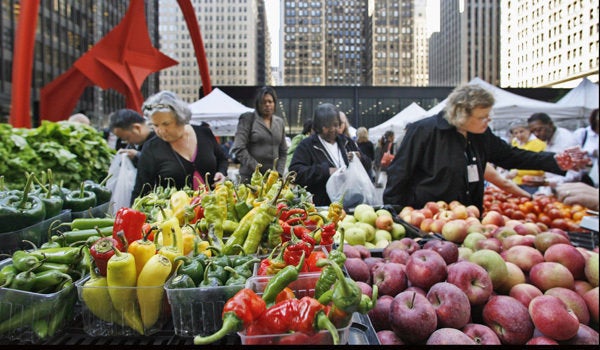
I really never put two and two together, but there was probably a reason why, during the 1960s newspaper strike that crippled the advertising business (among others), my father would take the dog out for a walk on weekend mornings and come back with peculiar canned foods, like Spam.
Being Jews, we weren't particularly big on Spam. We also weren't kosher (obviously), but rule number one in Jewish kitchens is "If you can't figure out what it's made out of, don't eat it."
But there we were, with our salivating Airedale watching closely (drooling so badly that he looked like he was swallowing shoelaces), standing in our Forest Hills', New York kitchen, making spam and eggs. And my memories of the stuff really aren't too bad. Sure, my father had two quadruple by-passes during his lifetime, and I take blood pressure and cholesterol meds, but for the most part, this luncheon meat of millions, which has the half-life of Plutonium, pretty much saved the day. And the wallet.
The fact is, when the economy hits the skids, we all change our eating habits, even if we'd like to think we don't. From the most expensive restaurants on down, we try to do more with less, and that, mostly, is okay. I mean, even Artisanal, Terrance Brennan's spectacular Manhattan eatery dedicated to all things cheese, has created a grilled cheese bar, with sandwiches showing up at a recession-friendly $12-$15. (I'm assuming that the "18-month Comte with truffle essence" is at the higher end of cheap). What's next? A mac and cheese bar? A crouton bar? Exactly how far are restaurateurs willing to go to make diners believe they're getting a deal when in fact they're really sort of not? The next time I find myself standing in my kitchen, staring at a gruyere-and-leftover proscuitto-on-homemade-Sullivan-Street-style bread sizzling away in my favorite, perfectly-seasoned, $5 Griswold cast iron tag sale pan, I'll give some serious thought to exactly how much I'd be able to charge my neighbors for it.
The problem comes down to one of numbers and cost of goods; restaurants have to make a profit to stay in business. What they bring in in dollars has got to outweigh what they spend on products, which means that everything that might otherwise get tossed must absolutely be repurposed. Again, this is the food business, and that's okay. It's even more okay if you can charge decent bucks for what you re-purpose. If you can turn leftover risotto into arancini, drizzle some perfect marinara over it, plate it well, and charge $20 for it, you're in business. Or rather, not out of business. If only the average home cook could learn that the stuff lurking in the back of their refrigerator can be repurposed exactly the same way, no one would use the word "leftovers" again. This is called smart cooking, and it's what my grandmother and yours probably did at one time or another, wherever they came from.
Of course, the flipside to all this yammering about cost of goods is fast food: it's a simple business model, which is why it has worked all these years. Industrialize the food production process, bring the cost of goods way, way down, bring the qualitative standards way, way down, synthesize flavor and taste so that a burger in Dubuque tastes exactly the same way it does in Tampa, convince people that they'll be happy when they eat it because they'll be getting a lot of food for little money, and again, you're in business. Which is why, in this hideous economy, McDonald's shares gained 6 percent.
So, what does this mean? If the average, newly dollar-conscious consumer has to choose between a $15 artisanally-produced grilled cheese sandwich, or a $5 Happy Meal that will include a huge pile of meat festooned with all the trimmings, fries, and an aircraft carrier-sized soda, what will they pick? Will they stop to consider health ramifications, and the impact of industrial food production on the environment, and the amount of money they're actually throwing out in the event that, god forbid, they actually don't finish everything (since fast food really can't be repurposed and plain old leftovers are disgusting because of their fat content)? Or will they simply want to satisfy the most basic animal need--hunger? The problem here is that neither option -- neither the overpriced comfort food nor the value priced multi-course meal -- works.
There is only once answer, and it is something that Michael Pollan, and now, Mark Bittman, write about extensively: eat from the land. Eat more vegetables. Make vegetables your main course, and meat, your side. Eat meat at only one meal a day, and only a few times a week. Watch your expenditures, and your waist-line, and your cholesterol levels, shrink.
As an experiment, I went to the supermarket yesterday and bought $81.00 worth of food, $12 of which was for meat products, and the balance of which was for vegetables. In the coming weeks, I will be making 33 meals from that shopping trip. Last night was meal #1: Indian-Spiced Sweet Corn Cakes with rice and dal. This morning was meal #2: Poached eggs with corn cakes. The math? $2.45, more or less, per meal.
It may not be Spam and eggs, but that's a very happy Happy Meal.
